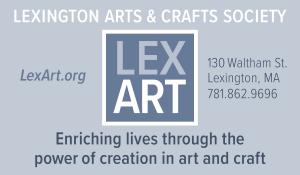Search
Friday, March 6, 2020 First Parish, Wayland
Sunday, March 8, 2020 Old South Church, Boston
The Wayland concert is dedicated to the memory of John Antes.
Trio Sonata in E Minor Carlo Tessarini (1690-1766)
Vivace • Andante • Allegro
Sonata in G Major for cello and continuo, op. 2, no. 7 Giacobbe Basevi Cervetto (1680-1783)
Adagio • Allegro • Minuet
Concerto Grosso in D Major, op. 2, no. 4 Francesco Geminiani (1687-1762)
Andante—Allegro
Adagio—Allegro
Intermission
Fuga, o capriccio a quattro soggetti Francesco Maria Veracini (1690-1768)
Ciaccona in G Major, op. 2, no. 12 Pietro Castrucci
Flute Concerto in G Major, IGS 25 Giuseppe Sammartini (1679-1752)
Allegro (1695-1750)
[Siciliano]
Allegro assai
Suzanne Stumpf, traverso; Sarah Darling and Anna Griffis, violins
Marcia Cassidy, viola; Daniel Ryan, cello; Michael Bahmann, harpsichord
Program Notes
The growing, culturally-rich metropolis of early 18th-century London drew musicians from continental Europe there to make their contributions to its musical life. It is well-known that George Frideric Handel had a wide influence on musical taste in London after his initial visit there in 1710 and subsequent move there in 1712. Although the English had already had their first experience of Italian opera in 1705, it fell to Handel, who had assimilated much of the Italian style after study in Italy, to compose the first opera specifically designed for London in 1710, making use of an all-Italian company of singers. His success further whetted Londoners’ appetite for the Italian style and Italian musicians, an enthusiasm that encouraged the composers featured on this program to venture there.
The virtuoso violinist Carlo Tessarini was a well-traveled performer, active in Venice, Brno, and Amsterdam before arriving in England in 1748. There he performed extensively at public concerts, including the concert series at Hickford’s Room, a prominent venue for chamber music in the city, where many of the other musicians represented on this program also performed. His Trio Sonata in E Minor alternates between playfully eerie melodies and harmonies, and carefree, bucolic moods.
Giacobbe Basevi Cervetto was an Italian cellist and composer of Sephardic Jewish origin. He came to England around 1738 and was among a number of cellists who brought the solo cello to favor in London. His long career in England included performing with the orchestra at the King’s Theatre and at the Vauxhall pleasure gardens, playing in numerous chamber concerts at Hickford’s Room and participating in private concerts. His cello sonatas are an important contribution to the Baroque cello repertory and display his command of the instrument, such as in his substantive Sonata in G Minor that makes extensive use of double stops, creating a rich contrapuntal texture with the continuo. The sonorous tenebrosity of the first two movements is contrasted by the lightness of the minuet that concludes the sonata.
The violinist Francesco Geminiani had a long and wide-reaching influence on English musical culture. As a student of Corelli, he immediately fared well after his arrival in 1714, as Corelli’s works were much in favor but few English violinists at that time could play them. In addition to organizing and performing concerts at Hickford’s Room and in other venues, he became active as a teacher and adjudicator. He composed and published much orchestral music while in London, including two sets of Concerti Grossi that became very popular and were performed frequently. His Concerto Grosso in
D Major shows the influence of Corelli in its four-movement sonata da chiesa structure, its pervasive use of suspensions in the slow movements, and its fugal second movement. It differs from Corelli’s style in the freer internal structure of the movements, revealing Geminiani’s more impulsive style of composition.
While Francesco Maria Veracini’s visits to London were relatively short, his participation in concert life there was prolific. He appeared in concerts at the Queen’s Theatre in 1714, then again in 1733, where he played so often that historian Charles Burney reported “there was no concert now without a solo on the violin by Veracini.” Following another series of concerts in 1745, his last in England, he was shipwrecked while crossing the channel. He survived but reported that he lost one of his manuscripts at sea. His interest in counterpoint, increasing as he aged, is evident in his Fuga, o capriccio a quattro soggetti. In this ingenious contrapuntal tour de force, the four themes stated by each of the instruments at the outset of this work are recombined in myriad ways and punctuated by incisive, homophonic chords.
The violinist Pietro Castrucci came to London through a connection to Handel. While in Rome in 1715, Handel’s patron Lord Burlington took notice of the extraordinary talents of Pietro and his younger brother Prospero. The brothers accompanied Burlington to England and remained in his household at least until 1721. Castrucci led Handel’s orchestra for over 20 years. Reputed to be an excellent performer on the violin, along with Geminiani he continued the line of influential Italian violin virtuosi in the London scene. The historian Charles Burney stated that his compositions “discover him to have been a man of genius, well-acquainted with the bow and fingerboard of his instrument” although he also stated that Castrucci’s music was considered “too mad” for his own age. His Ciaccona in G Major, the final work of his opus 2 set of sonatas, displays his virtuosity and flamboyant creativity.
Born in Milan, Giuseppe Sammartini was the son of the oboist Alexis Saint-Martin and was the elder brother of the oboist and composer Giovanni Battista Sammartini. While G.B. Sammartini remained in Milan his whole life, Giuseppe traveled widely, settling in England in the late 1720s where he performed at Hickford’s Room concerts in 1729 and 1732. He quickly developed a reputation as a virtuoso oboist, performing many of the oboe solos in Handel’s operas. The music historian John Hawkins stated that he was “the greatest oboist that the world has ever known,” possessing a beautiful tone that approached that of the human voice. In addition to the oboe, Sammartini played flute and recorder. Perhaps his most well-known work is his concerto for recorder and orchestra. For our concerts, we have adapted this work for performance on transverse flute. Each movement of the piece is imbued with adventure and dramatic storytelling. His compositional fluency shines on many levels: attractive melodies, sophisticated harmonic language with many modulations that enhance the drama, masterful counterpoint, and sensitive orchestration. This piece is emblematic of Charles Burney’s assessment of Sammartini’s music as being “full of science, originality, and fire.”
—Suzanne Stumpf and Daniel Ryan











Daniel Ryan and Suzanne Stumpf, Artistic Directors
349 Boston Post Road, Weston, MA 02493
tel. (781) 466-6694
All content © Musicians of the Old Post Road
Privacy Policy
Terms & Conditions
